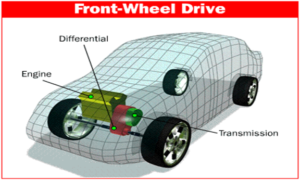Source: autoevolution.com
A number of petrol-fueled cars today still use three-cylindered engines. The Chevrolet Beat diesel, Volkswagen Polo, and A-star are some examples of such vehicles. Many of these three-cylindered engines have today been upgraded to offer optimum performance almost equal to the four cylindered one and have vast benefits to many drivers. Merits of a three-cylinder engine include:
PROS:
1. Higher fuel efficiency: This is one of the most prominent leads of three cylindered-engine due to its smallness compared to its four cylindered brother. The lesser the number of cylinders, the more fuel is effectively used. For example, taking the instance: two cars of equal fuel capacity with one having a three cylindered engine and the other with a four-cylindered engine, the later would require the fourth cylinder to be loaded with fuel as compared to one that has three.
2. Lighter: An extra cylinder makes the engine heavier, thus one that has the least number of them is usually the lightest. The overall weight of a car engine is essential as it adds up the total mass on the wheels hence slowed performances from the car. More weight also wastes fuel of the car as much is used to propel the weight of the car.
3. Cost Effective: Higher efficiencies and smallness of the car engine translate to better fuel consumptions and hence saving on money. This makes it cost-effective to either the driver or the owner who pays for gas.
4. Smaller hence less engine space: Due to the reduced number of cylinders a small space is occupied by the engine components. The saved space is used to mount other car components hence more volumes of space for seats and cargo.
5. Less friction: Engine Cylinders have moving components known as pistons. When pistons move their surfaces may rub against each other or even the surfaces of the cylinders. More engine cylinders would lead to more friction hence heating and wearing out effects. Such occurrences would require more oil for lubrication and cool for a four cylindered engine compared to a three-cylindered one.
6. Cheaper to repair: in case all cylinders and related parts broke down, the owner would encounter reduced maintenance and repair costs.
7. Less heat produced: Due to reduced friction, there is less heat generation, which must be catered for, is produced. A highly heating engine may cause faster wears in moving engine parts or even sometimes engine fires if not properly managed.
8. Balanced vertical forces: vertical forces, that is, primary and secondary force, are usually well balanced for they add up to zero.
9. Ecofriendly: Due to its fuel economic status, the ecosystem is spared by the three-cylindered engine from excess fuel that may be used and emitted as carbon fumes after the combustion process by the car`s engine.
10. Cheaper to purchase: due to the reduced amounts of raw materials used to build it. Also being a smaller engine with lesser cylinders; its overall cost of production is lower hence cheaper.
Cons:
1.Noisier: This engine produces a lot of vibrations at low speeds when there is no acceleration, which results in huge sounds that may be a disturbance to other people along the streets.
2. Lesser power under normal conditions: although its power can be boosted to higher output through turbocharging and valve modification, this is not the normal case until measures are put to ensure more power delivery. Its low power output can be attributed to its smallness compared to a four-cylindered engine. However if properly improved it can realize equal or a more powerful drive than its four cylindered one.
3. The crankshaft is heavier: Presence of a heavy crankshaft produces more vibrations when in motion hence noisy.
4. Imbalanced moments: unlike with its vertical force its moments are not equaled hence there is a cylinder to cylinder swaying is evident. Rough power output: This engine lacks regular power stokes within the rotation of the crankshaft hence less cylinder counts which affects the output of engine power. Power is usually produced after every 120 degree rotation of the crankshaft.
5. The motor sector is currently dominated by four cylindered-engine vehicles: Having a three-cylinder engine one would show some oddity when it comes to repairs in garages and during the sale of the car.
6. Lacks polished aspects: Unlike a four-cylinder engine with all aspects such as power delivery, compression, exhaust, and intake fully considered and upgraded, the three-cylinder engine may face satisfaction imbalances. This limits its user-friendliness to the car owner.
7. Experiences lag in firing: At lower revs, the engine toils to produce sufficient power unlike with a four-cylinder engine which works well at low revs.
8. May not be naturally suited for racing: Though they may be boosted through and are fuel efficient, a racer may be forced to purchase a more cylindered engine with certain racing preferences not found in the three-cylindered.
9. Little car production: Most companies today have moved on to more cylindered engines to explore their merits. This might be a huge setback.
10. Misconception and wrong thoughts: Most people today may not have so much confidence in their performance.




I have a 2021 3-cylinder Ford Escort S and am quite satisfied with it MPG and pickup. The manual calls for an average MPG of 34, combining city & highway usage. I do both every few days as a Senior on a limited income and have shown averages of anywhere from 35 to 37 MPG according to the car’s computer. The ride is a bit rough and any noise level is not noticeable. The car handles quite well.